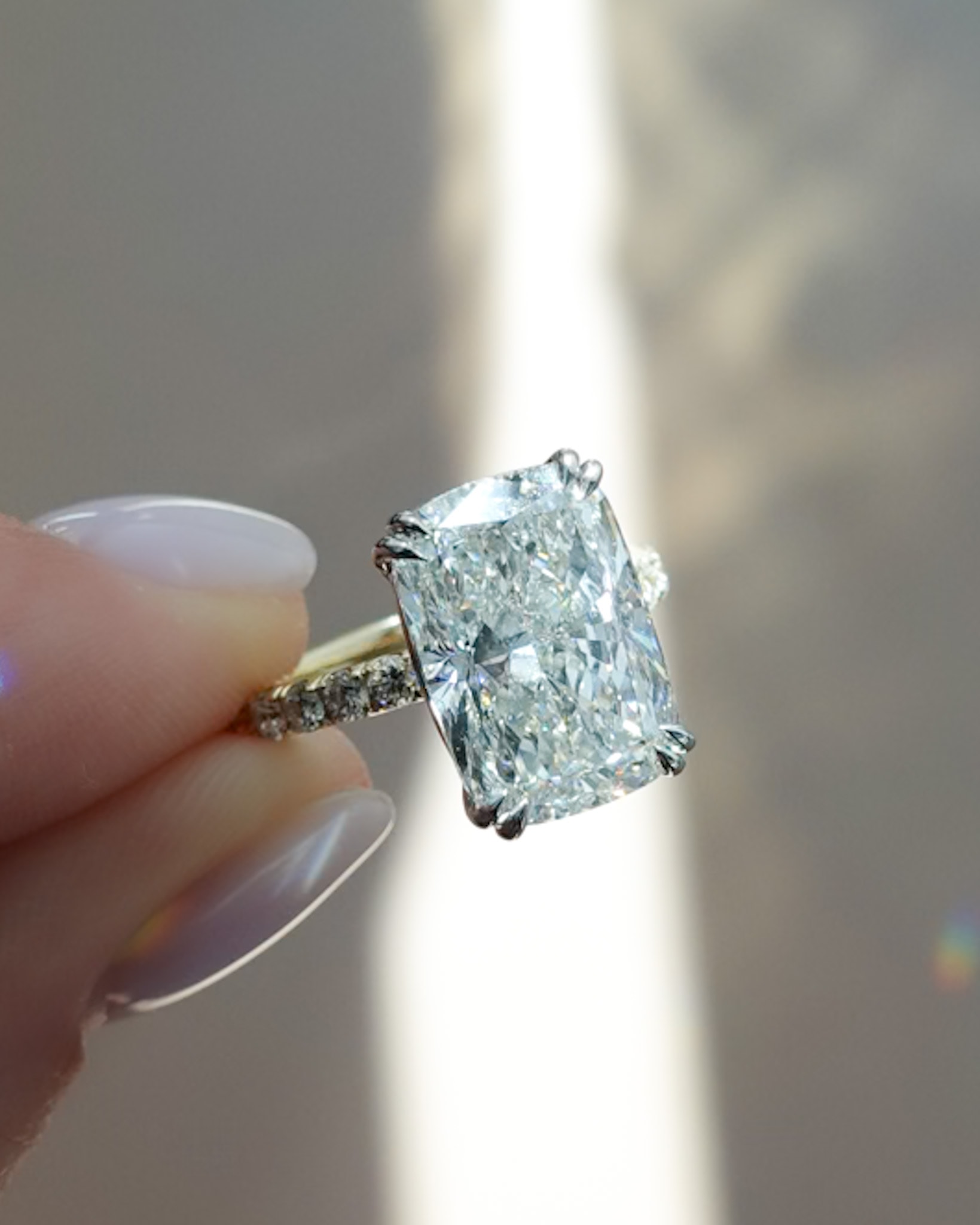In recent years, lab grown diamonds have revolutionized the jewelry industry by offering a sustainable, ethical, and affordable alternative to traditional mined diamonds. These diamonds, created in a controlled laboratory environment using cutting-edge technology, have gained popularity across the globe. As their popularity continues to grow, it’s important to understand how lab grown diamonds are affecting various cultures and societies. From their environmental benefits to the changing perceptions of luxury and value, lab grown diamonds are reshaping cultural views on gemstones. This article delves into the intersection of lab grown diamonds and cultures, exploring the impact these diamonds are having around the world.
The Environmental and Ethical Appeal of Lab Grown Diamonds
One of the key reasons lab grown diamonds are becoming increasingly popular is their ethical and environmental appeal. Many cultures around the world place significant importance on sustainability and environmental responsibility. Traditional diamond mining can be harmful to the environment, contributing to habitat destruction, soil erosion, and water contamination. Furthermore, the mining process often involves the exploitation of workers in unsafe conditions. In contrast, lab grown diamonds are created in a controlled environment, using renewable energy and without causing the environmental damage associated with mining. As cultures worldwide become more conscious of their ecological footprint, the appeal of lab grown diamonds continues to rise, particularly among consumers who value ethical practices.
Lab Grown Diamonds and Their Impact on Consumer Perceptions
Lab grown diamonds are also influencing cultural perceptions of luxury and value. In many cultures, diamonds have long been viewed as symbols of wealth, status, and enduring love. However, the growing acceptance of lab grown diamonds is challenging these traditional views. As lab grown diamonds offer the same physical and chemical properties as mined diamonds, many consumers are rethinking their definition of luxury. Cultures that once prioritized the rarity and high cost of natural diamonds are increasingly embracing the idea that lab grown diamonds are just as valuable. This shift is evident in a growing demand for more affordable yet high-quality alternatives in many societies. In fact, some consumers now see lab grown diamonds as a more ethical and sustainable option, redefining what it means to own a luxury gemstone.
Cultural Shifts in Jewelry Preferences
In various cultures, jewelry plays an important role in life milestones such as engagements, weddings, and celebrations. As lab grown diamonds become more mainstream, cultural attitudes toward these diamonds are shifting. In places like the United States and parts of Europe, lab grown diamonds are increasingly accepted as an alternative to mined diamonds, particularly in engagement rings. These diamonds allow couples to purchase a larger or higher-quality stone without compromising on ethical or environmental values. Additionally, younger generations, who are more focused on sustainability and social responsibility, are driving this cultural shift. In contrast, traditional cultures with deep roots in diamond mining may take longer to fully embrace the change, but as awareness of lab grown diamonds spreads, these shifts in perception are expected to become more widespread.
Lab Grown Diamonds and Their Role in Economic Development
Lab grown diamonds also have the potential to transform economies and cultures around the world. In regions where diamond mining is a significant part of the economy, such as parts of Africa, the rise of lab grown diamonds could challenge the status quo. While traditional diamond mining has provided jobs and economic opportunities, it has also led to exploitation and inequality. Lab grown diamonds, on the other hand, provide a new avenue for economic development, particularly in areas with access to advanced technology. In countries where labor conditions in mining are questionable, the production of lab grown diamonds could offer an alternative that is both economically viable and socially responsible. This shift could have profound cultural and economic effects, encouraging industries and workers to embrace a more sustainable and ethical path forward.
Global Acceptance of Lab Grown Diamonds in Different Cultures
The global acceptance of lab grown diamonds is also an example of how different cultures are adapting to new technologies and innovations. In countries with a strong emphasis on innovation and technological advancement, such as Japan and South Korea, lab grown diamonds are seen as a natural progression in the evolution of luxury goods. These countries have a long history of valuing technological advancements and sustainable practices, making them ideal markets for lab grown diamonds. On the other hand, more traditional cultures may initially be skeptical about lab grown diamonds, seeing them as inferior or not “authentically” valuable. However, as education around the technology and benefits of lab grown diamonds spreads, these cultural views are likely to evolve. In the future, lab grown diamonds could become an integral part of global cultures and consumer behavior.
The Role of Lab Grown Diamonds in Changing Gender Norms
Lab grown diamonds are also influencing cultural perceptions of gender and relationships. In many cultures, engagement rings featuring diamonds are considered a traditional part of marriage proposals. However, as lab grown diamonds gain traction, there is an increasing recognition that these diamonds represent more than just a material object—they symbolize values such as commitment, love, and equality. The accessibility of lab grown diamonds has led to more inclusive cultural practices, where both men and women are encouraged to embrace diamond jewelry as a symbol of love and partnership. This shift in gender norms is helping to break down long-standing stereotypes about who can wear diamonds and what they represent in relationships. As lab grown diamonds become more widely accepted, they are helping redefine the role of jewelry in modern partnerships across cultures.
Lab Grown Diamonds and Their Impact on Cultural Celebrations
In many cultures, diamonds are integral to celebratory events like weddings and anniversaries. As the popularity of lab grown diamonds grows, they are beginning to play a more prominent role in these cultural celebrations. In cultures where marriage is considered a significant event, engagement rings and wedding bands featuring diamonds are often seen as symbols of love, wealth, and commitment. As lab grown diamonds offer an affordable and sustainable alternative, they are being embraced as an eco-friendly option that still honors the cultural significance of the gemstone. This trend is particularly evident in younger generations who are increasingly interested in celebrating their love without compromising on their values. In this way, lab grown diamonds are contributing to a cultural shift toward more mindful and sustainable celebrations.
The Future of Lab Grown Diamonds and Cultures
Looking ahead, it is clear that lab grown diamonds will continue to influence cultures around the world in profound ways. As more consumers and businesses recognize the benefits of these diamonds, there is likely to be greater cultural acceptance and integration of lab grown diamonds into society. From sustainability and ethics to redefining luxury and value, lab made diamonds are not just changing the way people view gemstones—they are also reshaping cultural attitudes toward consumerism, tradition, and innovation. As technology advances and more countries embrace the benefits of lab grown diamonds, we can expect these diamonds to play a significant role in the cultural landscape for years to come.
Conclusion
In conclusion, lab grown diamonds are having a significant impact on cultures across the globe. From their environmental and ethical advantages to their ability to challenge traditional views of luxury and value, these diamonds are reshaping cultural perceptions of gemstones. As more people around the world embrace the benefits of lab grown diamonds, we are seeing a shift in consumer behavior, economic development, and social norms. With their growing popularity, lab grown diamonds are likely to continue influencing global cultures and shaping the future of the jewelry industry for years to come.


